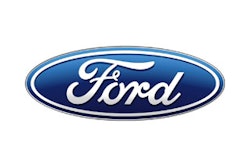By MIKE ROZEMBAJGIER, Vice President of Recalls, Stericycle ExpertRECALL™
So far in 2012, the FDA has issued nearly 300 warning letters. More than half of those were sent to companies within the pharmaceutical, medical device and dietary supplement industries.
This high number of warning letters recently led the U.S. House Committee on Oversight and Government Reform to partially blame FDA in a report on the ongoing crisis involving shortages of prescription drugs. The report states that in the first year of Dr. Margaret Hamburg’s tenure as FDA Commissioner, the number of warning letters increased 42 percent. In her second year, the number of warning letters rose a staggering 156 percent.
Regardless of whether the recent surge in warning letter issuances has led to a shortage of medications, those within industries regulated by FDA should take note of this trend and what can be learned from such occurrences.
A successful audit can mean all the difference between receiving a warning letter and maintaining a positive relationship with the regulatory agency. While warning letters are issued when a company is in direct violation of the Federal Food Drug and Cosmetic Act, understanding common violations mentioned in such notifications can prove beneficial to those undergoing audits.
In this third article of our series on warning letters, we will identify three of the most common violations identified by FDA in such enforcement actions and explain how such information can better prepare firms to respond to and effectively manage agency inspections.
Labeling & Misbranding
One major responsibility of FDA is to ensure that the products it is in charge of regulating are correctly labeled and branded. The agency spells out specific labeling guidelines on its website and provides detail to the requirements that businesses must meet in order to be in compliance.
When browsing the various warning letters issued by FDA, a broad spectrum of labeling and misbranding issues are identified. This includes, but is not limited to:
- Failure to bear adequate directions for use on labeling for the purposes for which the product is intended.
- Failure to furnish material or information required by FDA.
- Failure to provide adequate directions for use on labeling.
Reviewing FDA guidance and regulations affecting the labeling and branding of products will help businesses ensure compliance and ultimately prevent enforcement action from occurring.
Current Good Manufacturing Practice Violations
FDA ensures the quality of drug products, medical devices and dietary supplements by carefully monitoring compliance with Current Good Manufacturing Practice (CGMP) regulations. These regulations contain minimum requirements for the methods, facilities, and controls used in the manufacturing, processing and packing of a regulated product. In short, CGMP rules in essence ensure the safety of a product.
Some of the most common reasons identified for receiving warning letters over CGMP violations include, but are not limited to:
- Failure to establish and maintain adequate procedures for implementing corrective and preventive actions.
- Failure to establish a quality policy and quality objectives.
- Failure to adequately conduct quality audits.
In many cases, CGMPs are straightforward. But, if such regulations are not implemented in a firm’s Standard Operating Procedure (SOP), they can be easily overlooked. All businesses should regularly review such plans and update them to ensure they are consistent with regulatory expectations.
Misleading Promotional Claims
FDA wants to ensure that a complete picture of each product is adequately conveyed to the public by the companies it regulates and will likely review such marketing materials during an inspection. Product claims made on a company’s website are also up for review by the agency.
Three of the most common reasons identified for receiving warning letters over promotional materials include, but are not limited to:
- False and misleading claims.
- Unapproved use of drugs (i.e., “off-label” claims).
- Intentions to be used to cure, mitigate, treat, or prevent of disease.
Marketing materials and websites are fairly easy to modify and should be reviewed for the requirements set by FDA. The agency requires all promotional materials be truthful and not misleading; contain sufficient risk information; and be consistent with FDA-approved prescribing information. Any other information must be supported by substantial and sound evidence.
Warning letters communicate to a company what procedures are inadequate in a specific area regulated by FDA. By identifying the top reasons firms in a given industry are receiving such FDA enforcement actions, others will be able to isolate aspects of their business that should be addressed to ensure regulatory compliance.
Sometimes the confusing nature of regulatory burdens can catch companies off-guard. But knowing what inspectors are likely to be reviewing when at your facility plant can help ensure that the audit goes as smoothly as possible and that any miscommunication or misunderstanding is addressed before the inspection is complete. This could help clear up any issues and prevent what otherwise would have resulted in a warning letter from the agency.
While all businesses should take the time to review written procedures, labeling and promotional materials, sometimes mistakes happen. What’s your take? Please feel free to comment below! For more information, please visit www.stericycle.com.






















